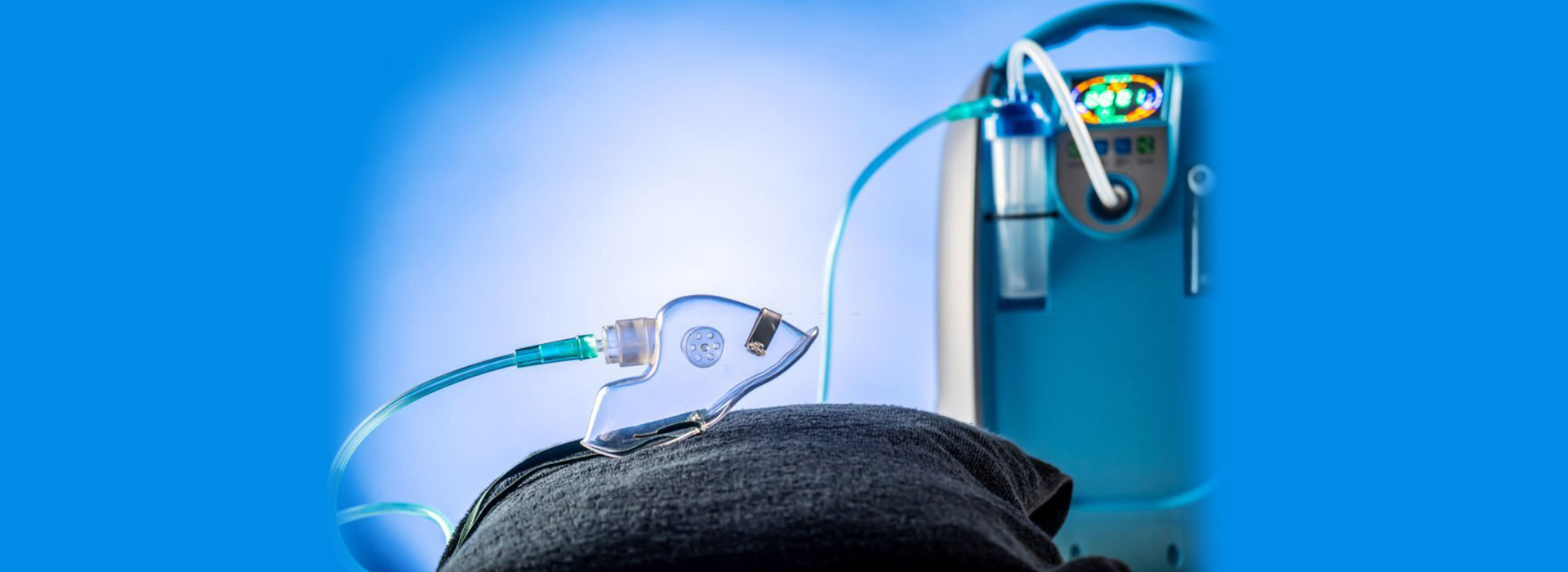Neuromuscular disorders (NMDs) refer to a diverse group of neurologic diseases that impairs the motor nerves, neuromuscular joints, and muscles. While there are various kinds of neuromuscular disorders, each influences the human body differently. For instance, some manifest themselves in the lower body and do not influence organ systems like the lungs. However, certain neuromuscular pathologies debilitate the respiratory muscles and hence, lead to breathing disorders. They can be of the nervous system (neuropathic) or the muscular system (myopathic) that deteriorate the breathing capabilities.
Certain neuromuscular disorders lead to the weakness of respiratory muscles in its patients. The extent to which NMDs impact respiratory function varies from mild difficulty in breathing to severe dysfunction that could be life-threatening.
Neuromuscular Conditions That Lead to Breathing Disorders:
Neuromuscular diseases are classified according to the neural structures they target. These conditions, then present breathing disorders as complications that arise as the prognosis worsens. Following are all conditions that fall under NMDs and significantly alter pulmonary function.
Some motor neuron diseases that affect the respiratory system include:
- amyotrophic lateral sclerosis,
- poliomyelitis,
- postpolio syndrome,
- Kennedy syndrome
- spinal muscular atrophy
Neuropathic that weaken the diaphragm include:
- Brachial plexitis
- isolated unilateral or bilateral phrenic
Peripheral neuropathies include acute conditions such as:
- Guillain-Barré syndrome
- porphyria,
- critical illness neuropathy,
Whereas chronic diseases include:
- chronic inflammatory demyelinating polyneuropathy (CIDP)
- Charcot-Marie-Tooth disease (CMT)
Pathologies of neuromuscular transmission include conditions such as:
- Lambert-Eaton syndrome
- botulism
- myasthenia gravis
Myopathic disorders include:
- polymyositis/dermatomyositis,
- muscular dystrophy,
- hereditary channel disorders, mitochondrial encephalomyopathies,
- acid maltase deficiency
- congenital myopathy.
How Do These Conditions Lead to Breathing Disorders?
In each neuromuscular disease, one common complication is respiratory muscle weakness (RMW). The prognosis of impaired respiratory function begins with sleep-related hypoventilation and leads to daytime respiratory dysfunction.
MOTOR NEURON DISORDERS:
Motor neuron disabilities such as Amyotrophic lateral sclerosis reduce muscle control due to damage to the brain and spinal cord. The progressive nervous system disease paralyzes the muscles that are involved in breathing. On the other hand, polio Mellitus and post-polio syndrome weaken the diaphragm and chest muscles, leading to chronic respiratory failure. While bulbospinal muscular atrophy renders it difficult to talk and swallow, it also contributes to recurrent aspiration.
PERIPHERAL NEUROPATHY:
Various peripheral neuropathic disorders also lead to breathing-related issues. Guillain-Barre syndrome is an autoimmune disorder in which the body’s immune system damages the nerves. One of its complications includes breathing difficulty due to the paralysis of muscles that control the breathing mechanism. Other acute conditions include porphyria and critical illness neuropathy which could be fatal due to respiratory complications.
Peripheral neuropathy also presents itself as a chronic condition that not only damages the nerves but also hinders respiratory activity. The two prominent conditions are chronic inflammatory demyelinating polyneuropathy (CIDP) and Charcot-Marie-Tooth disease (CMT). CIDP is a rare auto-immune disorder in which the immune system attacks myelin sheaths. While the disease does not affect the lungs but weakens the muscles that regulate lung movement. On the other hand, CMT is a hereditary disorder that impairs the peripheral nerves. The condition affects breathing but damages the phrenic nerve that regulates the diaphragm muscles.
NEUROMUSCULAR TRANSMISSION DISORDER:
Neuromuscular transmission is disrupted as a result of hereditary, auto-immune disorders of the neuromuscular junction. It includes Lambert-Eaton myasthenic syndrome (LEMS) and Myasthenia gravis (MG) in which the communication between nerves and muscles is impaired.
While LEMS rarely causes breathing difficulty, Myasthenia crisis is a crucial complication of MG that weakens the diaphragm and chest muscles.
Botulism is a rare and life-threatening illness caused by a toxin produced by Clostridium botulinum. The condition weakens the muscles including those involved in breathing.
MYOPATHY:
Myopathy encompasses diseases of skeletal muscles that impair the body’s voluntary movement and also affect respiratory function. Myopathy includes polymyositis and dermatomyositis – disorders of connective tissues that may lead to interstitial lung disease as a complication. Furthermore, muscular dystrophy i.e. progressive weakness and loss of muscle mass. The condition severely impacts respiratory function which leads to hypoxemia and other complications. Other myopathic conditions include hereditary channel disorders, mitochondrial encephalomyopathies, and deficiency congenital myopathy that degenerate the respiratory muscles as a complication.
How does a pulmonologist help?
Most neuromuscular diseases primarily impair respiratory muscles that exhibit various breathing problems. Even though the onset of these disorders is very unlikely, a considerable number of patients appear at a primary healthcare clinic for various pulmonary insufficiencies. The healthcare providers manage symptoms such as sleep-disordered breathing, diurnal hypoventilation, cough, and swallowing insufficiencies, especially in the case of bulbospinal muscular atrophy.
A physician may employ either an invasive or non-invasive approach for respiratory care. Non-invasive support includes nocturnal mask ventilation, resuscitator bag, or mechanical insufflation-insufflation to prevent any infection. A pulmonologist may also provide manual assistance for cough and swallowing.
Conclusion:
Neuromuscular disorders present complications that range over a spectrum of complicacy as they progress to damage one system after another. One of the prime targets is the respiratory system which can even turn into a life-threatening condition. Therefore, physicians are diligent to prevent the progression of NMDs into critical pulmonary conditions that are fatal and debilitate the person.


